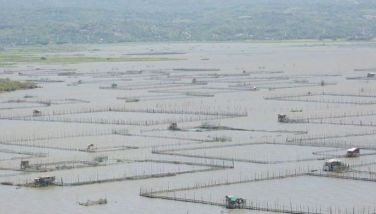Internet users in Phl seen to reach over 33 M
MANILA, Philippines - The number of Internet users in the country is expected to reach more than 33 million as the Philippines marked the 20th year of being connected to the worldwide web.
The Department of Science and Technology-Information and Communications Technology Office (DOST-ICTO) said that its current move to bring Internet connectivity to far-flung areas in island barangays and mountain communities through the Television White Space (TVWS) Internet connectivity project will jumpstart the growth in the coming years.
Science and Technology Undersecretary Louis Casambre, DOST ICTO executive director, said that the provision of Internet connectivity aims to spur inclusive growth in the areas not served by local telecommunications companies and Internet service providers (ISPs).
“The Internet’s role in inclusive development for Filipinos cannot be denied, allowing Filipinos to remain connected to family and friends as well as provide a livelihood for many through outsourced services,†Casambre said.
“We intend to drive inclusive growth in the country in the near future by providing rural connectivity in areas where Internet access is limited through TV white space technologies. TVWS will help deliver eGovernment services, educational content as well as health services to all areas of the country,†Casambre added.
The DOST-OCTO and another DOST unit, the Advanced Science and Technology Institute (ASTI), along with partners from the private sector and several local and international Internet stakeholder organizations, held yesterday a day-long Internet20PH discussing the past, present and future of Internet in the Philippines as a celebration of the landmark event in Philippine Internet history.
March 29, 2014 marked the 20th anniversary of Internet in the Philippines.
According to PHNET’s history, PHNET – formerly Philnet, a collaborative project of the DOST and several academic institutions – connected officially to the Internet on the same date in 1994 at exactly 1:15 a.m.
The Philnet project began in July 1993 with a limited electronic facility linking DOST, Ateneo de Manila University, De La Salle University and University of the Philippines-Diliman.
A year later Victoria University of Technology (VUT) in Australia, through institutional ties with Ateneo which acted as local relay hub, became the gateway to the Internet.
The DOST-ICTO outlook on continued growth of netizens in the Philippines was echoed by local telcos.
Francisco Claravall IV, Globe Telecom vice president for Consumer Broadband Products, said that while the Philippines has already seen an explosive growth in the netizen population, “the best years are ahead†for the country.
“We’ve had a good run as a country,†Claravall said in his presentation on “Current Internet Filipino Business Trends.â€
While growth would be stable in urban centers, “the growth is really happening in rural areas,†he said.
The huge population of future netizens – the youth – will be another source of Internet users, he said.
“The youth is going to be the major driver of Internet adoption,†Claravall said.
“Internet20PH: Connecting Filipinos to the World†was a week-long event that began on March 27 and ended yesterday at Crowne Plaza Hotel in Quezon City.
A series of workshops, conferences, technical training and other relevant activities were conducted to highlight the successful establishment and continuous evolution of the Internet technology in the Philippines.
The government, through the efforts of the DOST-ICTO and DOST-ASTI, has played a key role in the development of Internet technology in the country, particularly in government’s use of the Internet in service and information delivery.
The DOST-ICTO said that one such initiative is the Integrated Government Philippines or iGovPhil project.
The government had also passed laws to protect local netizens against cybercrime, such as the e-commerce law and the controversial cybercrime prevention act, which is currently under review.
Among the organizers of the event and Internet stakeholders present were the Philippine Chapter of the Internet Society (ISOC-PH), the Asia Pacific Network Information Centre (APNIC), Trans-Eurasia Information Network, and the UP Institute of Environmental Science and Meteorology.
“With a view towards the next 20 years of the Internet in the Philippines, the Internet Society encourages everyone, particularly its members, to come together to examine and consider the myriad issues related to the Internet. Each of us can do our bit and contribute to the global effort to keep our Internet open, accessible and of enduring value for all,†said Winthrop Yu of ISOC-PH.
“APNIC has proudly supported the development of the Internet in the Philippines since 1996 with Internet addresses, technology infrastructure deployment and training to help build the local skills required for the Internet to flourish. We encourage Filipino organizations to continue making the shift to the next generation of Internet addresses, IPv6, to ensure the Philippines enjoys another 20 years of Internet growth and benefits,†APNIC’s deputy director-general Sanjaya said.
- Latest
- Trending



























